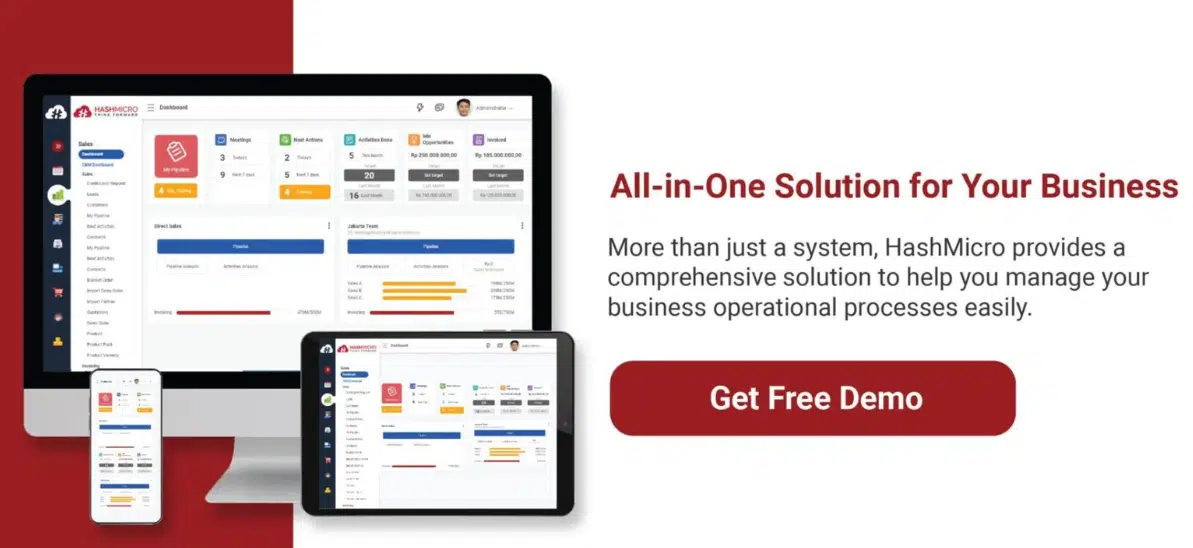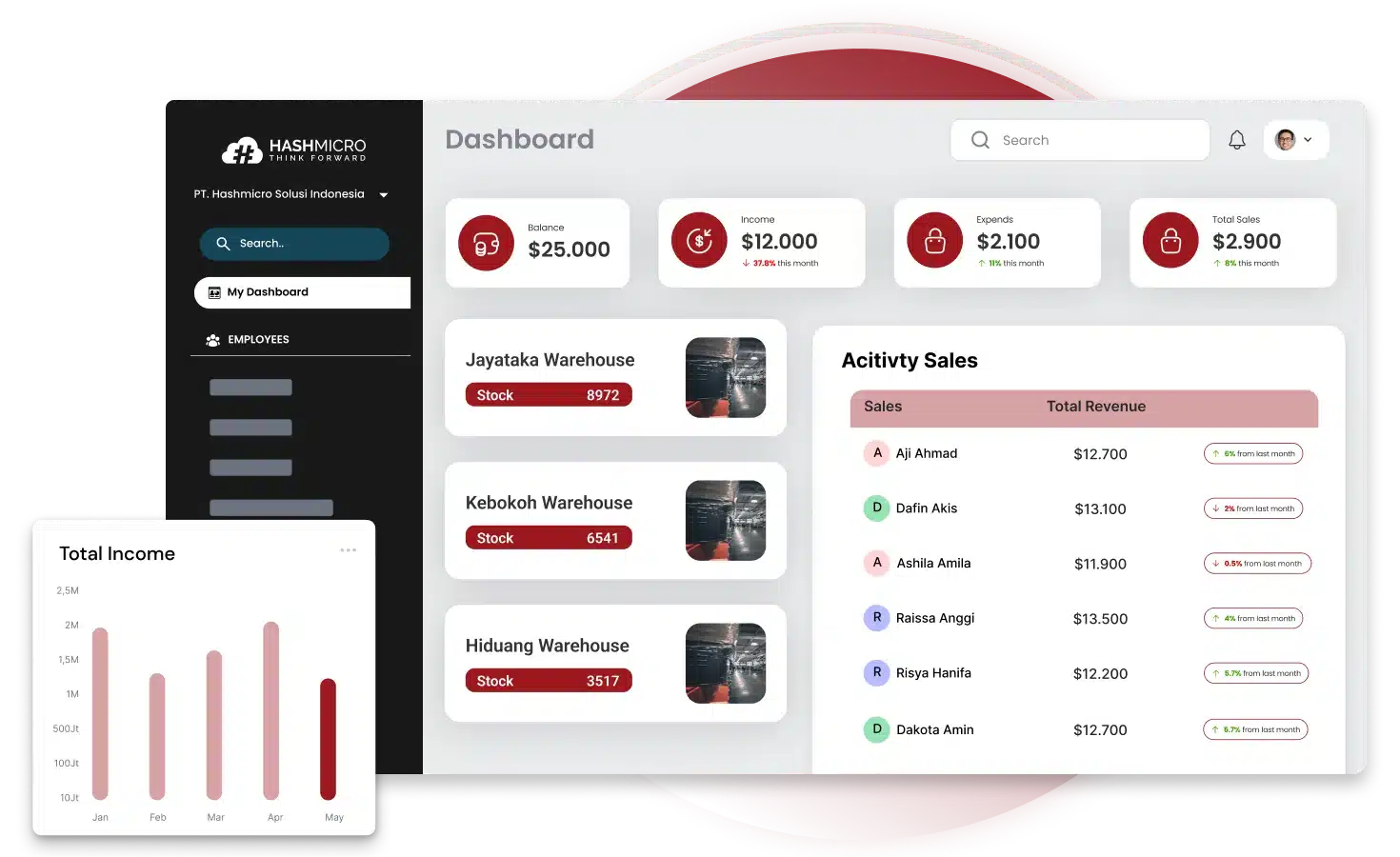Is your business struggling with efficiency, accuracy, and performance tracking? Do you find monitoring key metrics and managing data challenging due to outdated systems? If so, optimizing your performance management is the solution!
Ignoring these challenges can result in poor decision-making, inefficient resource allocation, and a lack of real-time insights—factors that directly impact business growth. Implementing an advanced performance tracking system helps streamline operations, improve accuracy, and enhance overall efficiency.
In today’s fast-paced business environment, leveraging data-driven performance metrics is essential. To discover how effective performance tracking can transform your business, read this article to the end!
Table of Content:
Table of Content
Key Takeaways
|
What are Performance Metrics?
Performance metrics are measurable data used to monitor various business processes. Activities, employee behavior, and productivity are the main aspects analyzed. These metrics help evaluate the achievement of overall business goals.
Companies assess this data by comparing it against set targets, such as employee productivity levels or the achievement of sales targets. A company’s performance metrics differ from its key performance indicators (KPIs).
Performance metrics measure various aspects of a business area based on specific objectives and provide a broader data picture. Meanwhile, KPIs are more specific, using certain metrics to assess a target’s success.
For example, performance metrics can assess a marketing team’s productivity level compared to a set target. At the same time, KPIs will specifically measure the marketing team’s contribution to increased sales from a campaign.
Why are Performance Metrics Important?
Performance metrics offer businesses a clear and objective method to evaluate their overall condition. By tracking these metrics, companies can measure growth, pinpoint operational inefficiencies, guide strategic decisions, ensure accountability, and motivate success.
Monitoring performance metrics is crucial in business management and goal-setting throughout an organization. Many managers rely on the widely used SMART framework to set goals and track progress. SMART stands for specific, measurable, attainable, relevant, and time.
Performance metrics align with the “measurable” aspect. They’re a critical tool for managers to assess progress by identifying key performance indicators (KPIs). So, businesses must monitor performance metrics to understand their overall success clearly.
For instance, a company may have a highly productive workforce, but if employees frequently work overtime, it could signal burnout or inefficiencies. It will affect the company’s performance metrics, and the manager must make strategic decisions to ensure its success.
Types of Performance Metrics
Businesses utilize various performance metrics, each designed to measure different aspects of operations and success. These metrics help organizations track progress, optimize processes, and make data-driven decisions. Here are the types of performance metrics that you should know:
1. Business performance metrics
Business performance metrics assess or track business activities such as marketing, sales, and profitability. They allow the comparison of data, goals, and objectives. The data obtained from monitoring performance metrics enables businesses to identify areas that need improvement to achieve their goals.
Here are key metrics to monitor for assessing a business’s overall performance:
- Return on investment (ROI): Measures investment returns against profitability, showing the value of a business investment. ROI helps assess past investments and guide future spending decisions.
- Customer lifetime value: Customer loyalty is crucial for business success, and this metric tracks how much and how often a customer spends.
- Net income ratio: To evaluate profitability, a company examines the revenue remaining after deducting expenses. The net income ratio is a quick indicator of financial health.
- Web traffic analytics: Website session data tracks new visitors and helps assess the impact of your business marketing efforts.
- Effectiveness ratio: Evaluates turnover rates for inventory, assets, and receivables, providing insight into overall efficiency and productivity.
2. Sales performance metrics
Sales metrics assess individual or team performance in selling a company’s products or services. Common metrics include sales activity, lead generation, customer retention, total revenue, and customer reach.
Businesses monitor sales metrics by evaluating performance against established sales targets. Analyzing these metrics helps assess the effectiveness of sales strategies. Essential sales performance indicators include:
- Monthly growth: Tracking monthly sales fluctuations is crucial for evaluating team performance and business growth. Historical data also helps forecast sales trends.
- Lead generation and follow-up: Reviewing follow-up rates and response times can help you assess how effectively your business team manages new prospects.
- Conversion rate: Your business conversion rate measures your sales team’s success. If many leads don’t convert, the sales director can identify where prospects are dropping off.
- Proposal output: Monitoring outbound proposals helps gauge the likelihood of meeting revenue goals.
3. Project management performance metrics
Project management performance metrics assess how efficiently and profitably a project is executed. From the initial briefing to completion, each stage is analyzed, with its processes measured and compared against predefined goals and objectives to ensure alignment with expectations.
This information helps determine the best approach to completing a project. A project manager usually monitors performance metrics in various aspects, such as:
- Quality control: Project success depends on delivering quality results. Quality control metrics assess outcomes and highlight production errors.
- Gross profit margin: Like ROI analysis, gross margin measures the gap between project costs and generated profit.
- Employee utilization rate: This metric tracks hours spent on a project versus available time, helping identify inefficiencies if they are too high.
- Meeting deadlines: Deadline metrics show the time and effort needed to complete tasks. Missed deadlines may signal team inefficiencies or communication issues.
4. Employee performance metrics
Employee performance metrics evaluate productivity and efficiency in meeting set targets that drive business growth. Monitoring these metrics allows managers to make adjustments and improvements to support employees in achieving their goals. Some commonly tracked employee performance metrics include:
- Work quality appraisal: Measure employee performance through managerial evaluations during performance reviews. Companies can implement a scoring system to assess work quality.
- Absenteeism rate: Employee attendance often reflects engagement and is a key indicator of productivity.
- Overtime rate: Excessive overtime can signal burnout. Tracking it helps HR adjust workloads, plan hiring, and understand the causes of turnover.
- Work quality appraisal: Manager evaluations during performance reviews provide a structured way to measure employee performance, using a scoring system to assess work quality.
How to Implement Effective Performance Metrics
Selecting the right performance metrics can be challenging for business leaders, as each organization has unique goals and operational needs. Therefore, a strategic approach is crucial when determining which metrics will provide meaningful insights.
Beyond just selecting the right metrics, effectively communicating the data is equally important. Clear explanations, compelling data visualization, and accessible reporting tools help stakeholders understand and act on insights. Here are the key steps that businesses should follow to enhance performance metrics
1. Engage stakeholders early
It is essential for employees to feel a sense of control over their performance metrics in a company. This lack of participation can lead to disengagement and a disconnect between individual efforts and organizational objectives.
Collaboration among executives, managers, and employees is essential for effective performance metrics. Each group offers valuable insights to create meaningful and actionable measurements. Employee involvement fosters ownership and boosts motivation, enhancing overall business performance.
2. Assess baseline performance data
Businesses must establish a point of reference to use performance metrics as an accountability tool effectively. Baseline data serves as this reference, providing a standard against which metrics can be measured.
Baseline data can come from various sources, including historical company records and industry benchmarks. Analyzing this data early on is crucial, as it lays the groundwork for setting realistic performance targets and benchmarks and ensures that progress is measured accurately and fairly.
3. Use a mix of leading and lagging indicators
Companies should use a well-rounded set of performance metrics incorporating leading and lagging indicators. Lagging indicators are generally easier to measure since they reflect past outcomes. However, leading indicators are essential for predicting future trends and making informed decisions.
In some cases, lagging indicators can also serve as leading indicators, depending on the context. For instance, recruitment data might be a lagging indicator for the HR department but act as a leading indicator for the company’s overall future performance.
4. Maintain flexibility and adaptability
As a company evolves, along with its business objectives and market conditions, leaders may need to reassess its metrics by adjusting what it measures and how it tracks performance. Changes in strategy or priorities may also necessitate shifts in measurement approaches to ensure alignment with the company’s goals.
Moreover, technological advancements can introduce new ways to assess previously unavailable performance. Businesses also must adopt a flexible approach, both in their mindset and the tools they use for measurement.
As technology advances, businesses must remain adaptable to stay competitive, not only in their strategic approach but also in their measurement tools. Implementing modern solutions ensures that performance tracking remains accurate, relevant, and aligned with evolving business needs.
One such solution is HashMicro’s ERP system, which streamlines performance management with seamless integration, real-time data monitoring, and automated reporting. By leveraging this technology, businesses can minimize errors and enhance accuracy. Check the pricing banner for the best performance metrics solution!
5. Establish clear targets and benchmarks
After gathering and analyzing baseline data for a specific performance metric, management can use these insights to establish clear performance goals. These targets may apply to the entire company, individual employees, or business units, ensuring that expectations are well-defined and measurable.
Performance targets should be linked to appropriate rewards and consequences for them to be truly effective. Recognizing achievements and addressing underperformance help motivate those responsible for driving progress, ultimately influencing the company’s overall success.
6. Implement and communicate metrics effectively
Just 20% of employees feel that performance management effectively motivates them. It is often due to unclear metrics and poor communication. When evaluations are not well understood, employees may lose motivation.
Effective leaders convey the purpose and impact of performance metrics. They help employees see the connection between their work and the company’s objectives. Setting clear expectations and fostering accountability enhances both motivation and performance.
7. Continuously track and evaluate metrics
Performance metrics become most valuable to a business when tracked consistently over time. Fluctuations in performance over a month, quarter, or year can reveal important trends and key milestones. By analyzing these changes, businesses can gain deeper insights into their growth and areas needing improvement.
Regularly monitoring metrics also helps guide the achievement of business objectives and the implementation of new initiatives. To ensure their effectiveness, leaders should frequently assess the relevance of these metrics and the accuracy of measurement methods.
Optimizing Performance Metrics with HashMicro ERP Software
HashMicro’s ERP Software is a powerful solution for streamlining performance tracking, enhancing operational efficiency, and improving decision-making. This cloud-based ERP system integrates various business functions into a single platform, ensuring accurate and real-time performance measurement.
To help businesses maximize their performance management, HashMicro offers a free demo and consultation. It allows companies to explore key features, customize the system to their needs, and receive expert guidance for seamless implementation.
With advanced tools for modern businesses, HashMicro’s ERP Software provides detailed analytics, real-time data tracking, and automated reporting to support informed decision-making and continuous improvement.
Here are the key features of HashMicro ERP Software for effective performance measurement:
- Advanced Business Intelligence (BI): Gain real-time insights and analytics with customizable dashboards and KPI scorecards. This feature empowers businesses to make data-driven decisions and monitor performance effectively.
- Performance Metrics Tracking: Monitor key business performance indicators with automated tracking and reporting. This feature helps businesses evaluate efficiency, identify trends, and optimize operations for continuous improvement.
- Mobile Accessibility: Integrating mobile apps improves flexibility and productivity, enabling employees to manage key business functions from anywhere and ensuring real-time responsiveness.
- Seamless WhatsApp Integration: Integrating WhatsApp for instant messaging, streamlined processes, and improved support will enhance communication and customer engagement.
- Secure Access Control: Protect sensitive data with role-based access levels, ensuring only authorized personnel can access specific information, reducing security risks.
- AI-powered Reporting & Insights: Automate report generation with AI-driven analysis, providing accurate insights to support strategic planning and informed decision-making.
- Flexible Hosting Options: Choose from cloud, on-premise, or hybrid hosting to meet security, compliance, and operational needs, ensuring scalability and efficiency.
Conclusion
An ERP system is essential for tracking performance metrics, optimizing operations, and improving overall business efficiency. An effective ERP solution is widely used across industries, ensuring accurate data management and streamlined workflows.
Choosing the right ERP system requires careful evaluation. HashMicro’s ERP Software offers a reliable and efficient platform to help businesses monitor key performance metrics while minimizing errors. With its advanced capabilities, HashMicro enhances every aspect of operational performance.
HashMicro’s ERP system includes performance metrics tracking, AI-powered reporting, advanced business intelligence, and seamless system integration. This all-in-one solution simplifies performance measurement, provides instant insights, and ensures data-driven decision-making.
Experience the benefits of optimized performance tracking with HashMicro’s free demo and see how it can transform your business operations!
Frequently Asked Questions
-
What are the key performance metrics?
KPI stands for key performance indicator, a quantifiable measure of performance over time for a specific objective. KPIs provide targets for teams to shoot for, milestones to gauge progress, and insights that help people across the organization make better decisions.
-
What are the five key performance indicators in HR?
Recruitment KPIs: Time to hire, cost per hire, source of hire, offer acceptance rate, and applicant satisfaction score.
-
What is the performance evaluation metric?
Performance evaluation metrics are measures used to evaluate the efficiency, effectiveness, and quality of a system, process, or entity. They provide objectives and systematic ways to assess outcomes, impacts, results, research findings, experiments, or interventions.





































